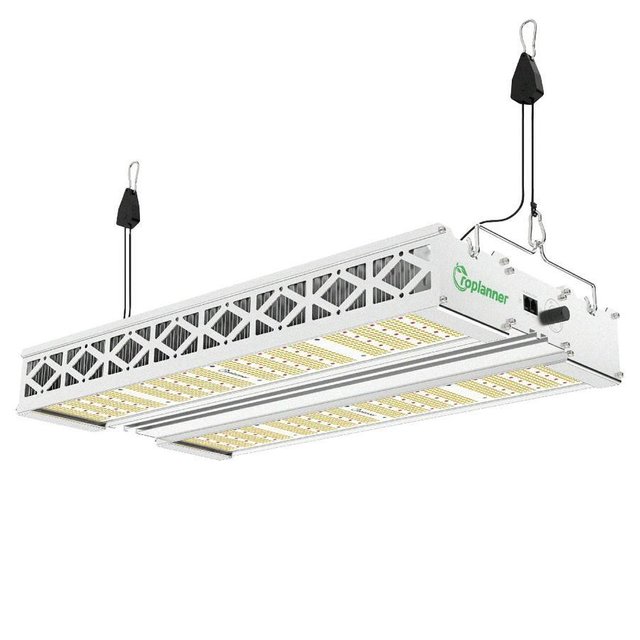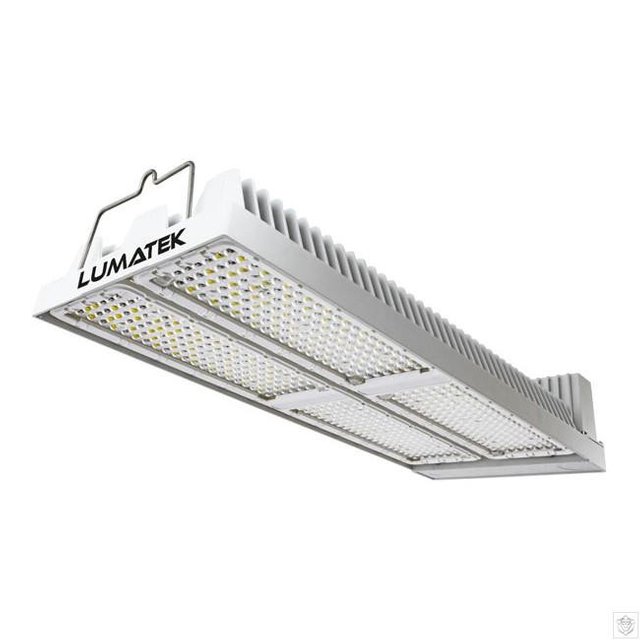Today, full-spectrum LED grow lights are a very attractive choice for growers. Their operating costs are only a fraction of other systems, while still providing bright, penetrating light that can produce large amounts of output. However, browsing a large number of manufacturers and reviews on the web can quickly eliminate your sails, especially when you don’t know what to look for.
I accidentally chose a “daylight” spectrum bulb but found that it does not produce the invisible light waves that our plants desire. This is really disappointing, especially after paying a lot of cash for it.
We have compared the two full-spectrum LEDs that are from different brands here, which are suitable for most cannabis cultivation, for you to peruse in your leisure time.
What is Full-Spectrum?
An ideal full-spectrum light will be producing light colors outside of the visible range of human eyes, as plants respond well to UV and IR radiation depending on the stage of growth they are in.
Many lesser brands of “full-spectrum” lights miss out on this aspect of growing plants and leave the purchaser in a bit of a bind when the plants are halfway done growing and start hitting an energy limit.
Lights that have vegetative and blooming or flowering functions tend to be the ones to go for as they have included this issue into their design, though there are quite a few single setting lights that really can produce even in these ranges.
What size of grow lights does one need for plants growth?
If you are growing plants, you must find the grow lights with a coverage area of 50W per sq. ft. This is extremely important and not something you can forego. Also, check the guide available by the brand to check how much coverage area the light provides and then choose the ideal one accordingly.
Groplanner TPO Series 640W Full Spectrum LED Grow Light
Features:
This Groplanner LED grow light is engineered to replace traditional HPS fixtures. At similar light intensity, this grow light ensures a better control of the growing and consumes 40% less power than traditional 1000W HPS fixtures, whilst delivering a stronger and generative crops with lower temperature and operational cost. Run at 640W, Groplanner O series has amazing efficiency of 2.6mol/j and 2200mol/s, so that it provides powerful light output and uniform canopy penetration to achieve high yield. Good heat dissipation means lower environmental heat, thus avoiding damage to plants. Groplanner TPO series LED grow light with built-in dimming knob provides growers with greater flexibility.
Dimming: 1164umol/s
PPE:2.6umol/j
Input Voltage:100–277VAC.50/6OH2
Coverage:Commercial Grow 4X4' Personal Grow 5x5
Dimensions:29.1-x14.8"x5.3"/1pcs
Net Weight:17.8lbs
Gross Weight:20.1lbs
Dimming:0–10V, Manual dimming/External lighting controller (aditional purchase)
Warranty:36 months
Features:
This Lumatek LED grow light is a dimmable full-spectrum LED plant growth light, suitable for 4'x 4'plant space or 3'x 3'flower space. Innovative, slim, compact, powerful and efficient ceiling light LED luminaire designed for use in greenhouses. The fixture has an ultra-thin profile, only two inches thick. The system consumes 680w of power, which is 40% less than the standard HPS lamp, and has a powerful PPF-2285 μmol/s. This lamp contains full-spectrum Osram diodes and pays more attention to the red color to increase the final yield. It also has a PAR efficiency of 3.4 µmol/J. These provide a full spectrum of light, tailored specifically for internal growth.
EFFICACY: 3.4 μmol/J
PFF: 2285 μmol/s
INPUT VOLTAGE: 200–400V , 50–60Hz
INPUT CURRENT: 1.98A @ 400V ; 3.40A @ 230V
WATERPROOF: IP66
LIFETIME: +50000 hrs
LIGHT DISTRIBUTION: 100º-150º
LIGHT SOURCE: Osram
THERMAL MANAGEMENT: Passive Cooling
DIMMABLE: With 0–10V Dimmer
EXTERNAL CONTROL: With Lumatek Digital Panel Plus 2.0
WEIGHT: 8.8Kg
DIMENSIONS: 653.5 x253.9 x 117.5mm
LED Grow Light Strips distance
Grow lights are used when there is unavailability or lack of direct sunlight and a mistake can result either in plant withering or burning of the foliage if put so close to the plants. Proper use may enhance the yield and health of the plant and for that purpose, you need to follow the owner’s manual for the proper placement of LED Grow Lights Strips for your indoor plants.
1 Grow Lights distance from plants
Grow lights of different power capacities will behave differently and their distances will also vary from the canopy of the plant. For example, 250W led grow lights can be kept at a distance of 1 to 2 feet from the canopy of the plant while using for 2 to 4 plants only whereas 450W grow light may serve around 8 plants in the distance of 15 inches to 30 inches. The distance keeps increasing with an increase in Watts and may go up to 3 feet in 900 W grow lights.
2 Grow Lights during the vegetative stage
The vegetative stage is the most crucial stage of plant development in that it makes its entire biomass during this period while it determines the amount of flowering a plant will exhibit during the next stage. The vegetative growth period can be handled with 16 hours of continuous light per day or in some cases it can further be prolonged for 24 hours to obtain smooth growth. The plants exposed to 16–18 hours of light per day will be ready in 6–8 weeks to move into the flowering stage.
3 Grow Lights during Flowering stage
The exposure of the plants to indoor grow lights will determine the flowering initiation and the period it will keep continuous flowering. Generally, the exposure to the lights is reduced to 12 hours per day, red light is increased along with the far-red light of the visible spectrum that will determine flowering. The flowering under these conditions remains to continue for 8 to 10 weeks that determine bud’s formation along with stem elongation whereas flowering is reduced when bud’s formation is at its peak. Plants need more Phosphorus and Potash for healthy flower formation than Nitrogen at this stage.
What to Look for When Buying Grow Light?
There are various types of grow light, and they come in a variety of sizes and functionality. The first thing to consider when getting a grow light is the space available to you. You don’t want to get something too big for the area. Then consider the plant you will be growing; small plants need only low-watt grow lights, while more plants need high-watts grow lights.
Wattage
The wattage required depends on the plants’ size and the area they cover, and the size of your grow room. If you have a small grow room, you will need relatively low wattage compared to when the room or plants are large. Large grow rooms require several wattages, which can even run into several light strips. Be sure to calculate the wattage needed per square area covered by the plant.
Quality
Another essential thing to consider is the quality of materials used to build the stand and the quality of the LED lights. Check of the build of the frame is sturdy and made from durable materials. Also, check the lifespan of the bulbs. Usually, the LEDs should last for several years, so be sure you check the lifespan of the lights included. If you know anyone who has bought the stands, you can confirm their durability or check customer reviews.
Light spectrum
Plants need blue and red wavelengths of light for proper growth, which is essential that you get lights with a full spectrum that will cater to your plants from germination to flowering and budding.
Blue light has a wavelength of 440nm to 450nm; RED light is 620nm to 660nm and 730nm for far Red spectrum; Orange light has a range of 605nm to 610nm. Ultra Violet light has a wavelength of 380 to 410nm.
Your crop’s blue wavelength is needed during the vegetative and germination stages, while red light is suitable for the flowering phase. However, you must give your plants various light spectrums for healthy growth.
Energy Consumption
Your plants can be exposed to light as long as possible, except in cases of plants that have photoperiodism. However, because of electricity costs, lights are generally left on for 12 to 14 hours. It is advised that you go for lamps with low wattage or have energy savings function, especially when you are a hobbyist or own a small plant.
Conclusion
One of the factors that you need to consider when choosing a grow light to use should be the wattage of the unit. Your grow light wattage will determine the size of your coverage area and how the light will affect the various cannabis grow stages.
A 600w grow light is highly efficient and does not consume a lot of power. It provides a sizeable coverage that you can increase by using more than one grow light in your grow tent. When growing cannabis, you need to get a lamp that will provide you with a full spectrum light.
It reduces the need for using more than one light in your grow room, saving you unnecessary costs. The light as well needs to be on the right spectrum for each growth stage if you want to get the best yields.

